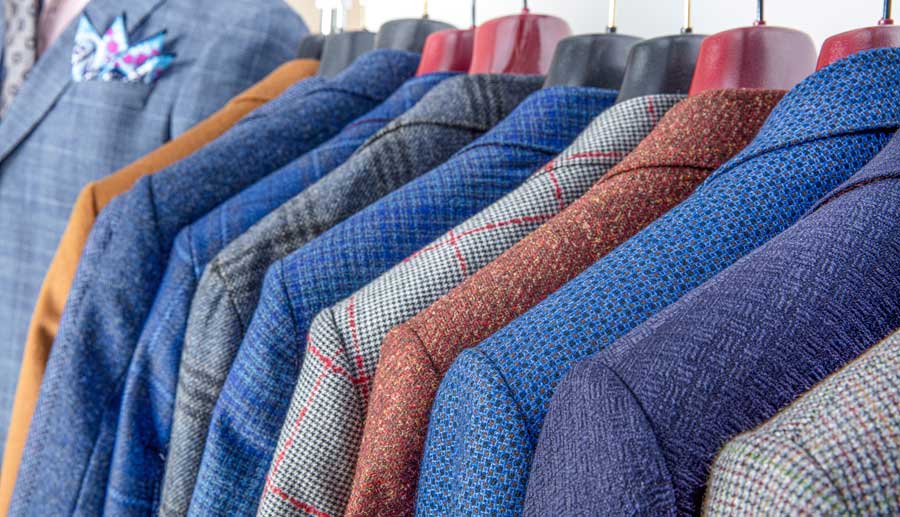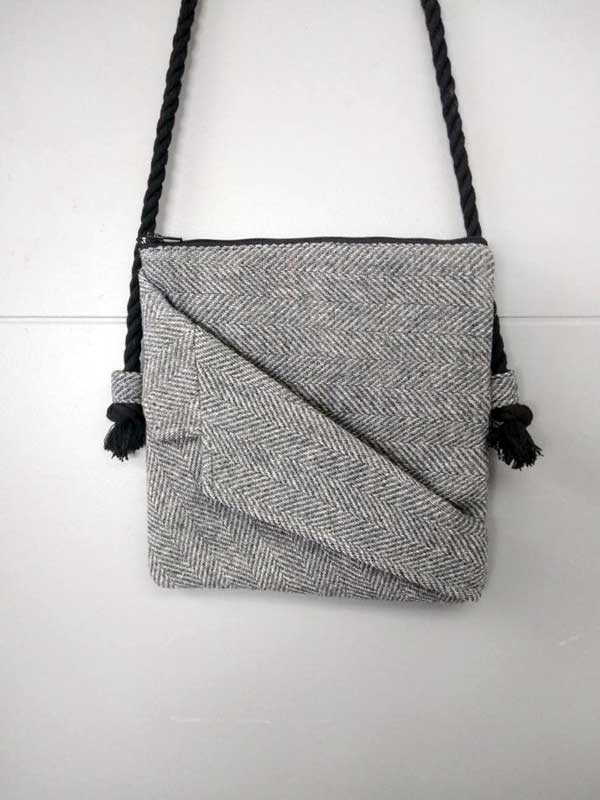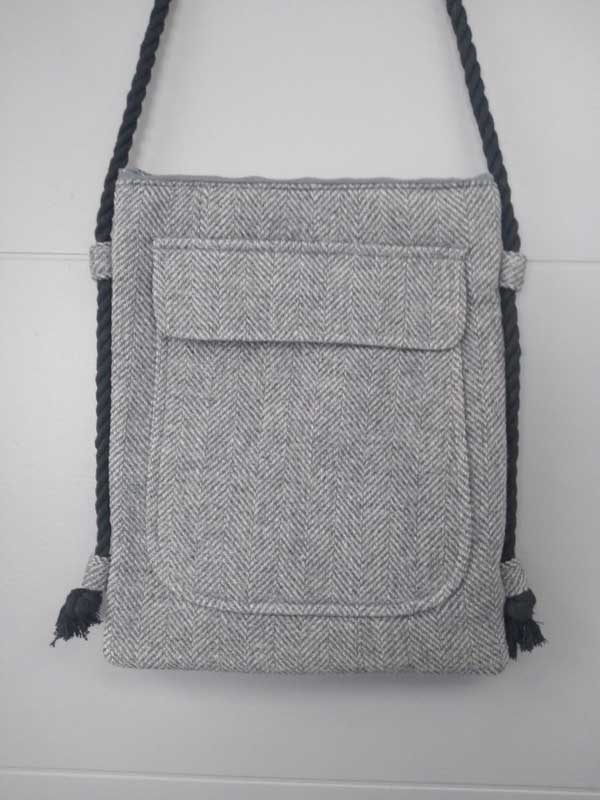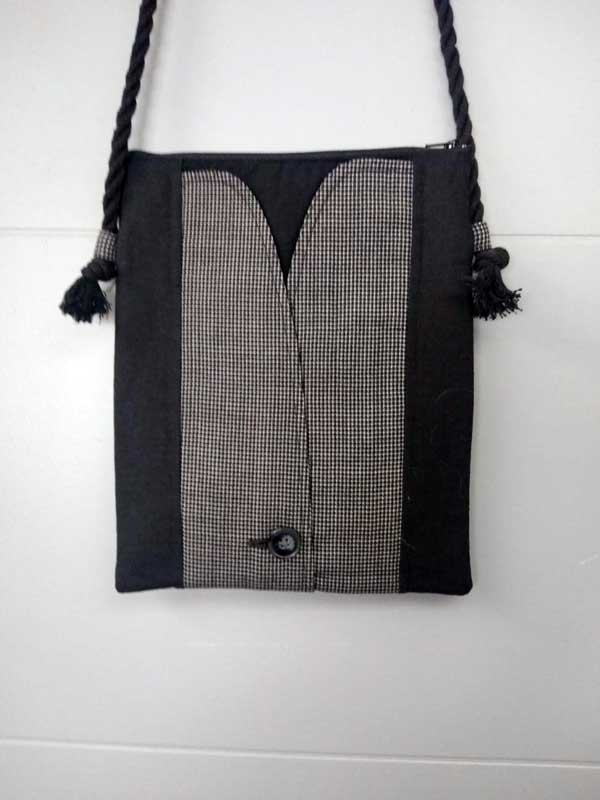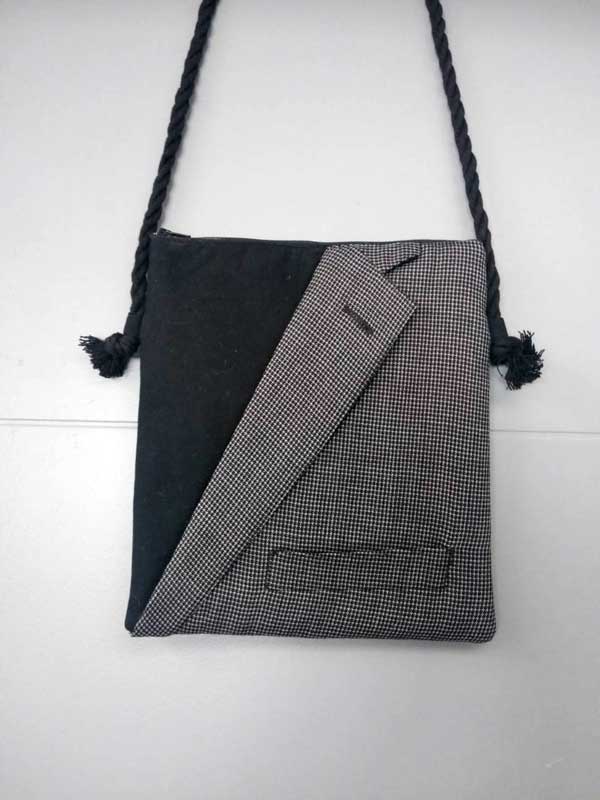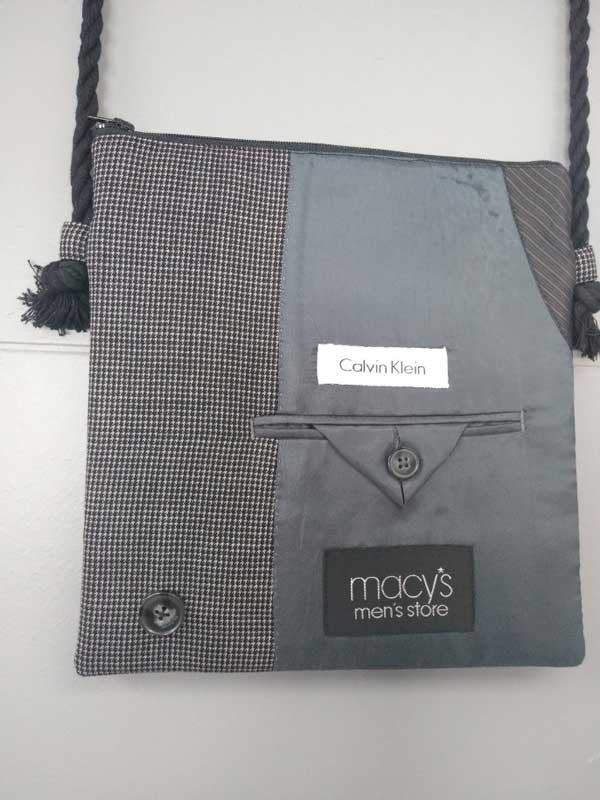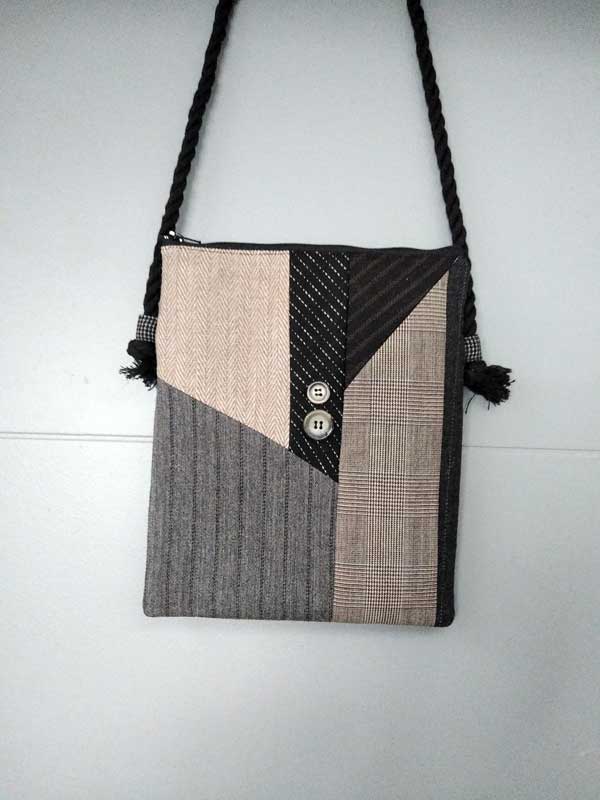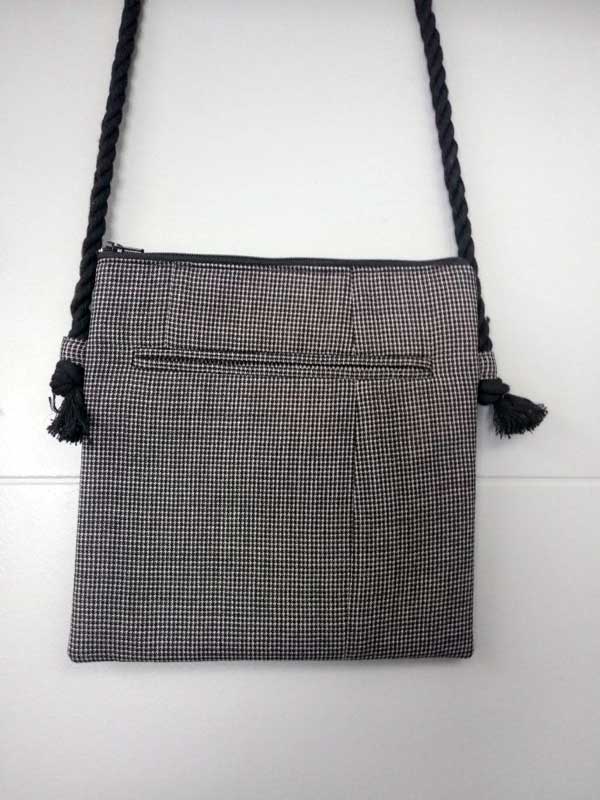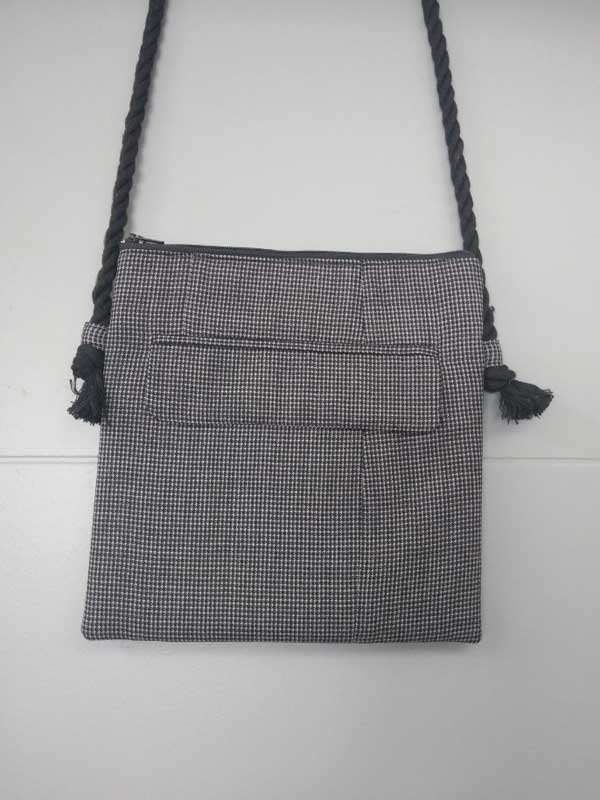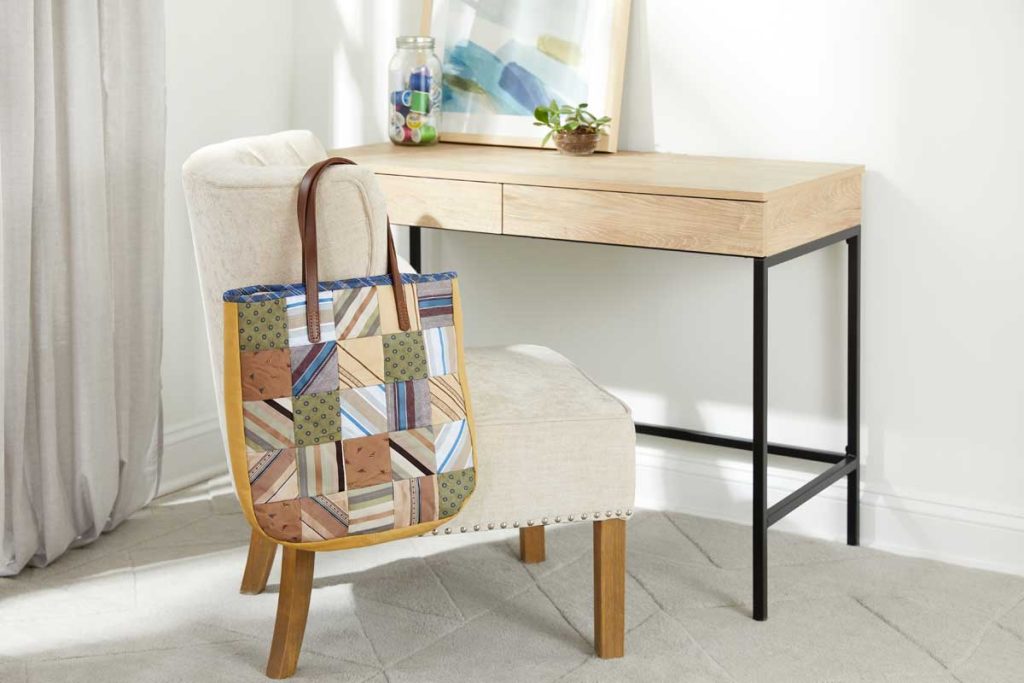Who doesn’t love a great print fabric? But, sometimes, it might “just need a little something” to make it pop. Enter the myriad decorative stitches found in your sewing machine…those that often sit unused and those you’ve always wanted to use but didn’t quite know where.
Accenting a print is easy! Just look at the lines and pick a place to embellish.
Preparation
Most cotton prints will require some kind of stabilization to avoid puckering, especially if you plan to use a dense satin-stitch type design. The stabilizer can be as simple as a fusible interfacing added to the underside, or an “official” stabilizer you may have in your machine embroidery supplies. Some sewers use a liquid stabilizer to saturate the fabric and when it’s dried and pressed, the fabric becomes paper-like to better support the stitches. After stitching, it’s simply washed away.
The choice of stabilizer is also influenced by the fabric’s final use. If it’s part of a tote or bag, or even a quilt, batting or fusible fleece on the underside may suffice to stabilize the fabric. But, if it’s a pocket, cuff or yoke of a garment, batting isn’t a likely option, so select something else.
If you do a lot of decorative stitching, you likely have a stash of various types of stabilizers to experiment with.
Planning
Whenever possible, it’s best to end any accent stitching in seam allowances. This eliminates the need to tie off thread ends, and crossing the stitching with another seaming ensures no pull-out issues.
Stripes are one of the easiest prints to accent, as there are already lines and spaces to follow. Simply pick a place on your presser foot to follow the printed stripe with the added stitching.
Does your fabric have circles or squares on it? If so, think about what will happen if you outline the design area and the stitches come together to complete the shape… it’s almost impossible to plan an exact match, and you may have a “blip” in the design area. Are you OK with that? Can you cover it with another type of embellishment, like a tassel, button, or charm, to hide the mismatch? If that’s not in your plan, select a stitch without distinct motifs—one that looks continuous—so there’s no visible mismatch at the joining.
If your print motifs have corners, how will you handle those? Again, it’s a good idea to choose embellishing stitches that don’t have distinct motifs and look continuous, then stop the needle on the inside of the stitch, turn and continue on, leaving an open corner.
If your machine has programmable features, it’s possible to figure out exact lengths of repeats to outline a print motif with whole stitched motifs, or you can combine stitches to have, for example, a line of straight stitches with five flower repeats and another line of straight stitches, making it a no-brainer for corner turning with aplomb.
At the end of the outline stitching, do not overlap the motifs but instead stop stitching exactly at the beginning point. Pull threads to the underside and tie off to secure, or use a lock-stitch feature on your machine to sew a few stitches in place to anchor the thread ends.
It’s a good idea to use a bobbin thread that matches the top thread to avoid any visible tension issues and, of course, you should test-stitch on the same fabric/stabilizer you plan to embellish before actually committing to the project.
Accent Options
For large flower petals, like our funky daisy, consider stitching down the petal centers for accents, then around center printed motif(s) for additional color.
Some prints look great with simply a straight-stitch accenting. On the parrot fabric, a straight stitch with gold metallic thread accents their perches and adds just a small touch of bling to the fabric. Be sure to use a metallic needle with a larger eye to avoid shredding delicate metallic threads. Straight stitch accents can be done using the presser foot, or with free-motion techniques.
Finally, a simple zigzag stitch can be used to accent any geometric print.
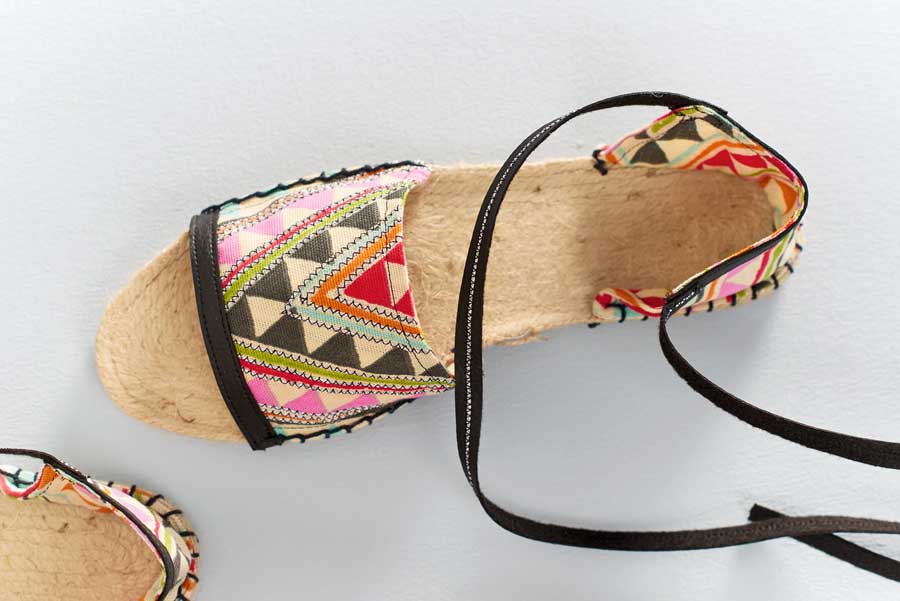
Stitch Options
More articles on using decorative stitches:
- Sewing Machine: Using the Built-In Specialty Stitches
- Decorative Stitches, Part 2: In the Hoop
- The Triple Straight Stitch
~Linda Griepentrog Linda is the owner of G Wiz Creative Services and she does writing, editing and designing for companies in the sewing, crafting and quilting industries. In addition, she escorts fabric shopping tours to Hong Kong. She lives at the Oregon Coast with her husband Keith, and three dogs, Yohnuh, Abby, and Lizzie. Contact her at .





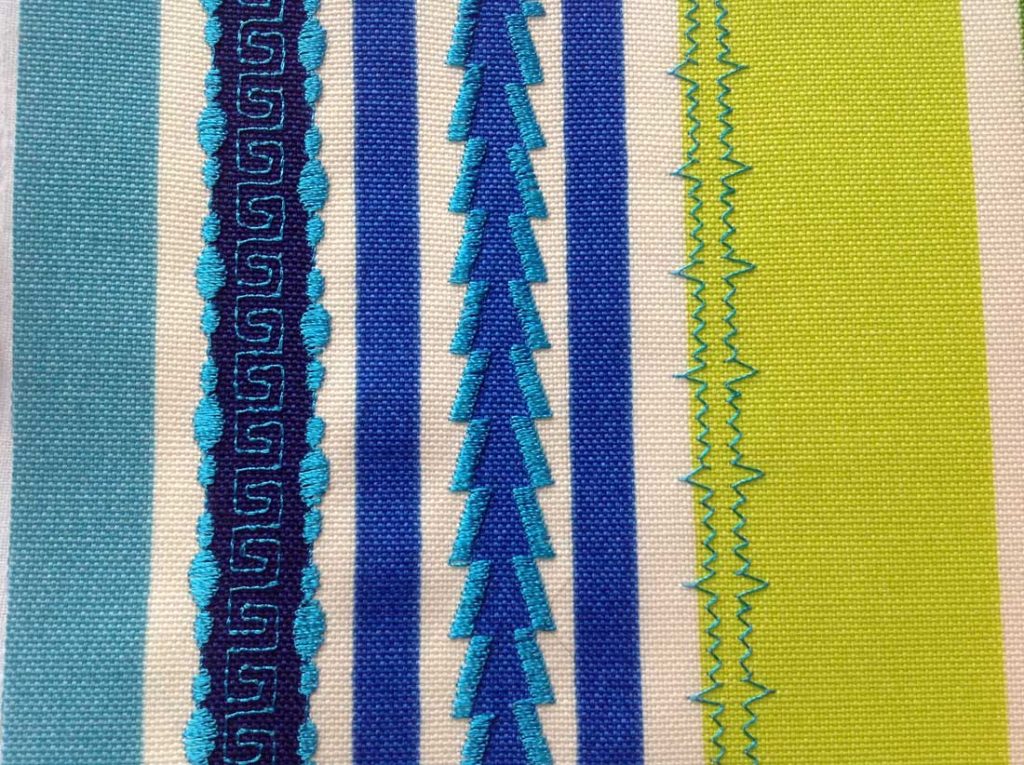
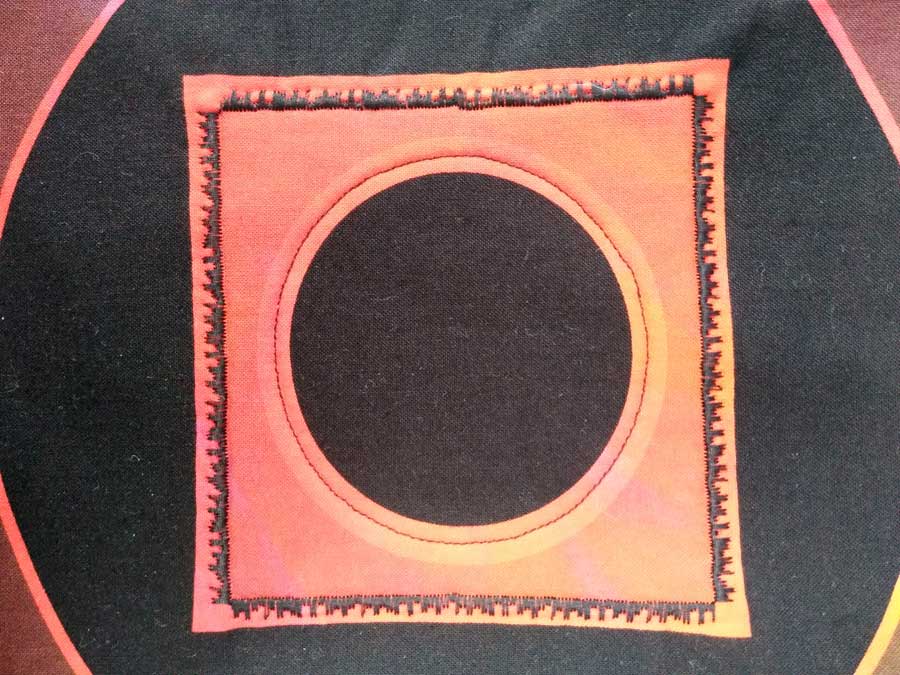
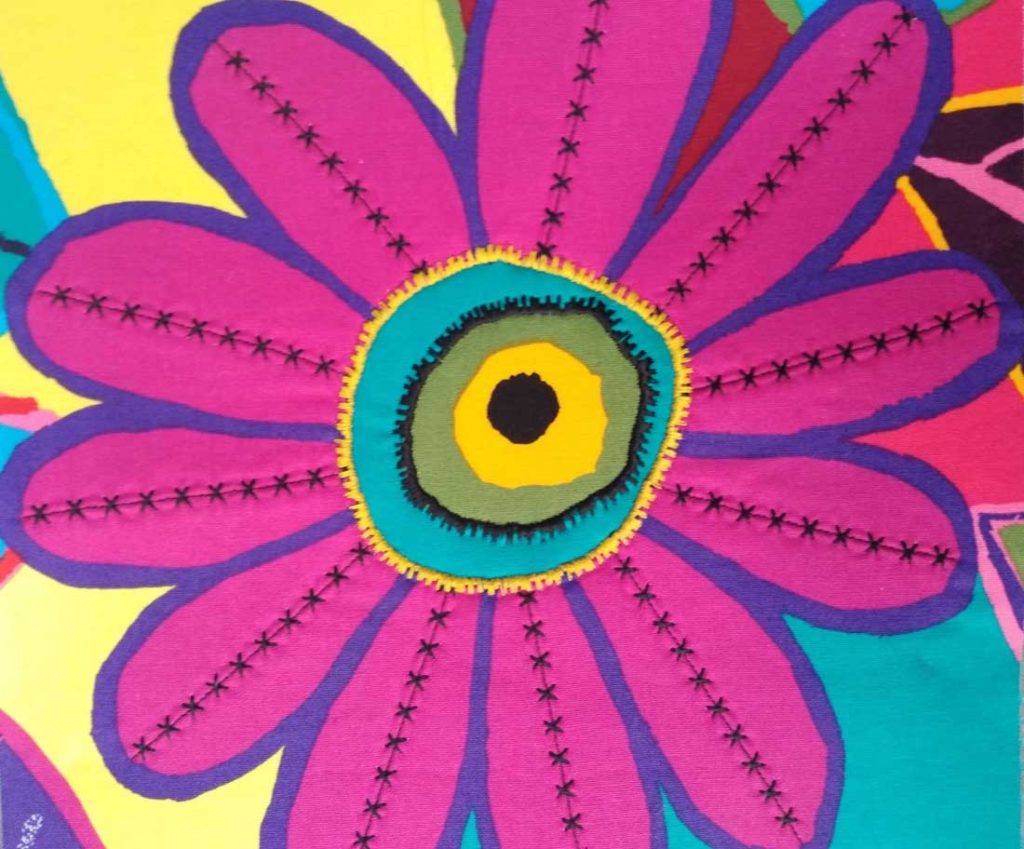
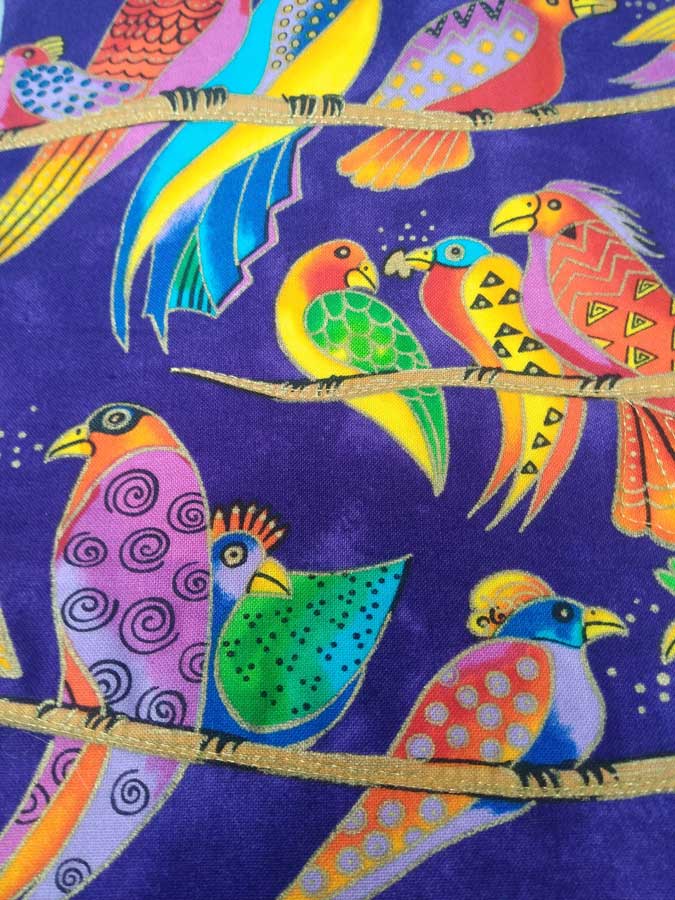
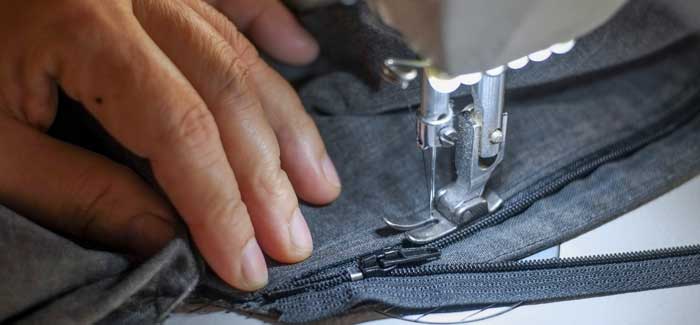
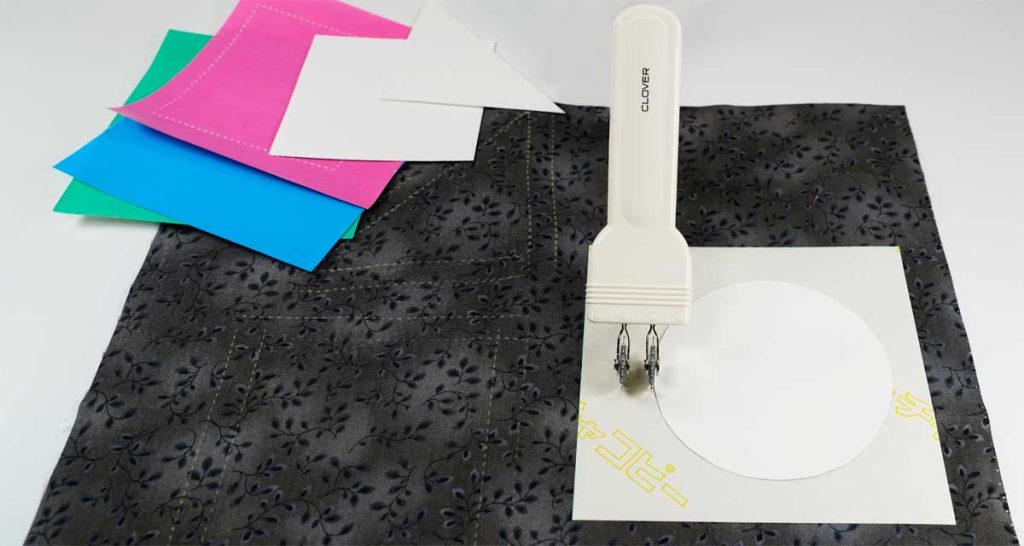


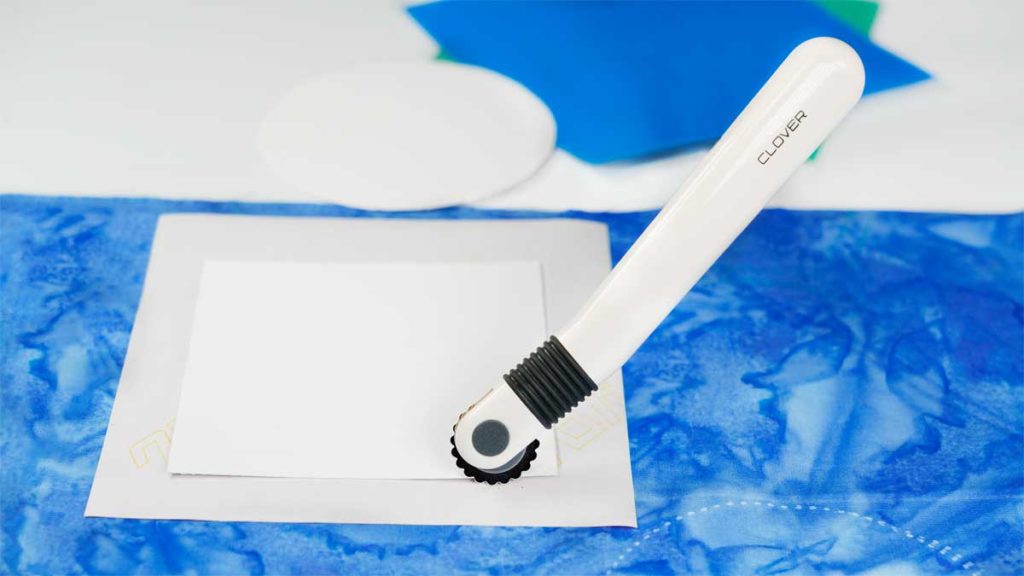

 Princess-line seams often result in a smoother line that allows for a body-skimming fit. They can also be more flattering than typical darts, especially if you have a large bust or shoulders as they not only help to flatter curves, but allow for more opportunities for fitting. They can also be used to create a unique style to the garment by using contrasting fabric or color blocking, or even to add a piped contrasting trim.
Princess-line seams often result in a smoother line that allows for a body-skimming fit. They can also be more flattering than typical darts, especially if you have a large bust or shoulders as they not only help to flatter curves, but allow for more opportunities for fitting. They can also be used to create a unique style to the garment by using contrasting fabric or color blocking, or even to add a piped contrasting trim.